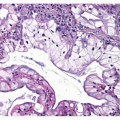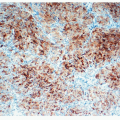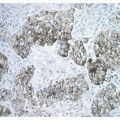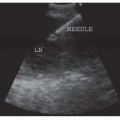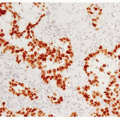Correlation of Imaging with Pathology of Lung Cancer
Ronald E. Fisher
Philip T. Cagle
INTRODUCTION
Current imaging techniques correlate very well with the pathology for purposes of diagnosis and staging of lung cancer, although there are limitations including false positives, and confirmation by pathology is still desirable or necessary in many situations. This chapter provides a brief overview of the correlation of imaging with the pathology of lung cancer.1,2,3,4,5,6,7,8,9,10,11,12,13,14,15,16,17,18,19,20 and 21
LUNG CANCER DIAGNOSIS AND STAGING
CT and PET have long been successfully used for lung cancer diagnosis and staging. A metaanalysis published in 2006 reported that the sensitivity and specificity of PET in diagnosing single pulmonary nodules and masses is 96% and 78%, respectively, and the sensitivity and specificity of PET in mediastinal lymph node staging is 83% and 92%, respectively.3 Use of PET/CT scans permits identification of unsuspected lung carcinoma metastases in 20% of patients missed by more traditional imaging techniques (Fig. 19-1).1
However, a number of studies conclude that PET/CT scan is not ready to replace surgical biopsies, including mediastinoscopy, for the diagnosis and staging of lung cancer patients. In one recent study, pathologic examination altered CT-determined stage in two thirds of patients and PET-determined stage in half of patients.7 In a study of 200 patients undergoing PET/CT followed by staging mediastinoscopy and, if appropriate, resection, PET/CT correctly staged 49.5% of patients, under-staged 29.5%, and over-staged 21%.15 It has been suggested that PET/CT has improved sensitivity of staging at the expense of less specificity due to an increase in false positives.6 Resolving issues related to false positives and false negatives on PET or PET/CT scans is needed to avoid unnecessary costs and surgeries.5,6,11,16,20,21 The pathologic correlates of false-positive PET scans are discussed further below.
Stay updated, free articles. Join our Telegram channel

Full access? Get Clinical Tree


